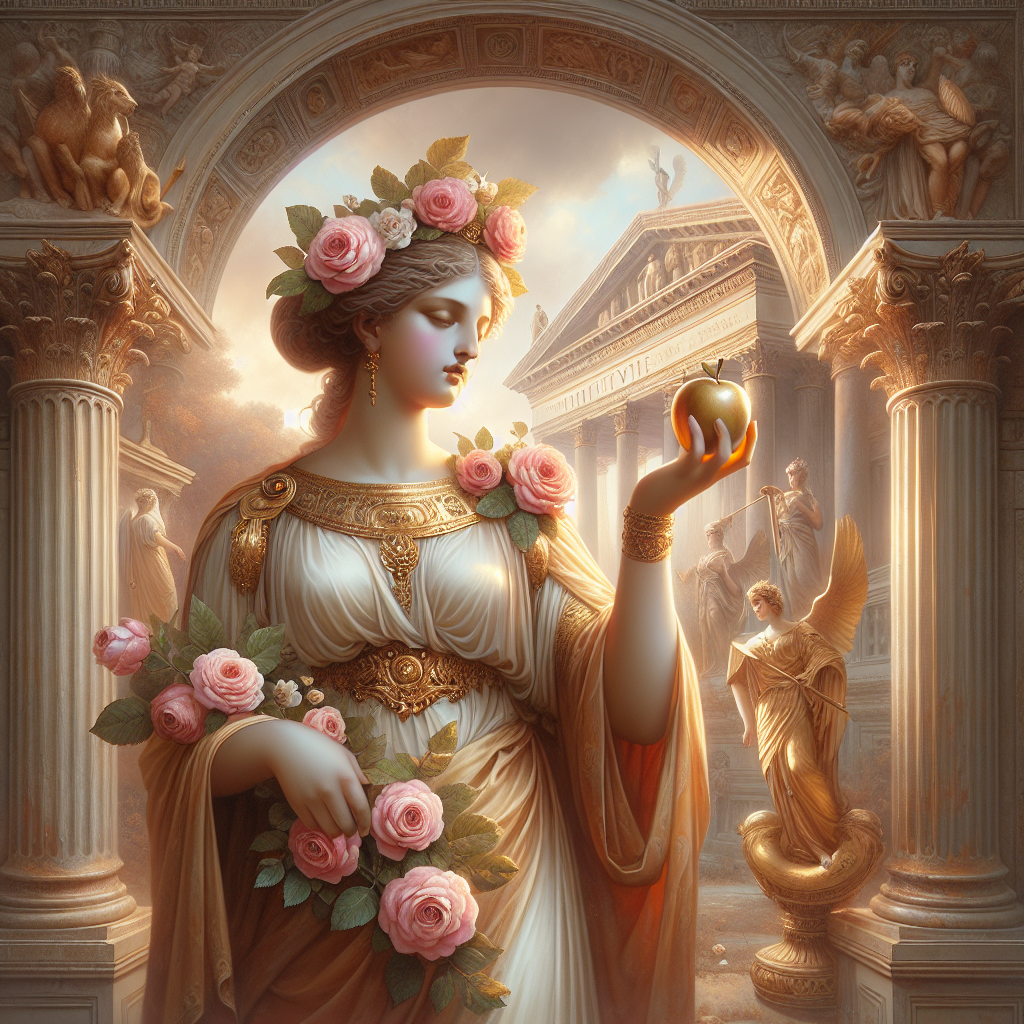The Role of Venus in Roman Love and Beauty Mythology
Introduction
In the tapestry of Roman mythology, few deities are as captivating and influential as Venus, the goddess of love, beauty, desire, and fertility. Her presence permeates literature, art, and culture, serving as an embodiment of both natural and divine beauty. As a central figure in Roman mythology, Venus not only reflects the ideals of love and attraction but also plays a critical role in shaping societal norms and values pertaining to romance and beauty. This article explores Venus’s multifaceted role within Roman mythology, her connections to other deities, and her lasting influence on culture.
Origins and Evolution
The name “Venus” is derived from the Latin word for “desire” and “love,” and her earliest representations can be traced back to ancient Italian fertility cults. Originally associated with agricultural abundance, Venus later evolved into a more complex figure as Roman culture absorbed influences from Greek mythology. In Greek mythology, she is equivalent to Aphrodite, who is often linked with not only romantic love but also the physical and aesthetic aspects of beauty.
In Rome, Venus became the personification of the idealized, romantic aspects of love. This transformation from agricultural goddess to prominent deity of love reflects the Romans’ increasing emphasis on personal relationships and individual emotions, marking a departure from the more utilitarian aspects of earlier worship.
Venus in Roman Mythology
The myths surrounding Venus are rich and varied, illustrating her importance in both divine and human affairs. One of the most well-known myths involves the Judgement of Paris, which depicts a contest among Venus, Juno, and Minerva. Paris, a Trojan prince, is tasked with determining who among the three goddesses is the fairest. Venus, offering him the love of the most beautiful mortal woman, Helen of Troy, ultimately wins the title of “fairest.” This event sets the stage for the Trojan War, showcasing the profound consequences of love and desire.
Venus is also prominently featured as the mother of Cupid, the Roman counterpart of Eros. Cupid symbolizes not just romantic love, but also the unpredictable and often mischievous nature of desire. Together, Venus and Cupid epitomize the dichotomy of love—it can be transcendent yet perilous, joyous yet fraught with conflict.
Interactions with Other Deities
Venus’s relationships with other gods and goddesses add more layers to her character. Her affair with Mars, the god of war, underscores the paradox of love and war coexistence. Their passionate romance embodies a blending of opposing forces; love can foster creativity and beauty, yet it can also ignite conflict and strife.
Furthermore, Venus is frequently depicted in contrast to the goddess Diana, who represents chastity and independence. This duality allows for exploration of various aspects of femininity in Roman culture: the nurturing, loving qualities of Venus versus the autonomous, self-sufficient traits of Diana. In this sense, Venus serves as a paradigm of both the erotic and nurturing dimensions of female power.
Temples and Worship
The worship of Venus was integral to Roman religious practice. Her most famous temple, the Temple of Venus Genetrix, was built in 46 BCE by Julius Caesar and was dedicated to Venus as the mother of the Roman people. It symbolized the divine lineage of Rome, linking Venus directly to the founding of the city. This temple served not only as a place of worship but also as a cultural and political center, where ceremonies celebrating love, beauty, and fertility were conducted.
Festivals such as the Veneralia, dedicated to Venus Verticordia, celebrated her as the goddess who could turn hearts. During this festival, women prayed for Venus’s favor in matters of love and marriage, illuminating the divine mother’s role in guiding and protecting romantic relationships.
Venus in Roman Literature and Art
The influence of Venus stretched beyond religious practices into the realms of literature and art. Poets like Virgil and Ovid celebrated her in their works, often emphasizing her dual role as both the instigator of romantic passion and a figure of maternal guidance. In Ovid’s “Metamorphoses,” Venus takes on a dynamic role, exploring the power of love through transformations, be it in the relationships between gods and mortals or the changes in human behavior driven by desire.
In art, Venus has been celebrated for centuries as the quintessential symbol of beauty. Renaissance artists such as Botticelli in “The Birth of Venus” depicted her emergence from the sea, symbolizing both the birth of beauty and the transformative power of love. This painting, rich in symbolism and aesthetic allure, highlights how the goddess transcends her original Roman identity to become a universal emblem of love.
Lasting Influence
The ethos of Venus continues to resonate through modern culture. The very idea of Venus serves as an archetype for contemporary understandings of romance and beauty. Venus has inspired narratives about love in literature, cinema, and art, shaping ideals around beauty, attraction, and relationships. In contemporary society, her influence can be seen in everything from advertising and fashion to discussions about self-love and personal identity.
Moreover, the very term “Venus” is often used to evoke themes of aesthetic beauty and romantic allure, exemplifying her lasting legacy. The concept of Venus as a multifaceted representation of love continues to shape cultural conversations around intimacy, beauty standards, and emotional connections.
Conclusion
Venus holds a prominent place in Roman mythology as the personification of love and beauty, symbolizing the complexities of desire, the intertwining of love and war, and the transformative power of relationships. As a dynamic figure whose narratives are deeply interwoven with those of other deities and human experiences, Venus encapsulates a wide spectrum of emotions, offering insights into the nature of humanity itself. From her origins as a fertility goddess to her enduring legacy in art and culture, Venus remains a pivotal icon in the mythology of love, illuminating the timeless intrigue surrounding beauty, desire, and the human condition.






